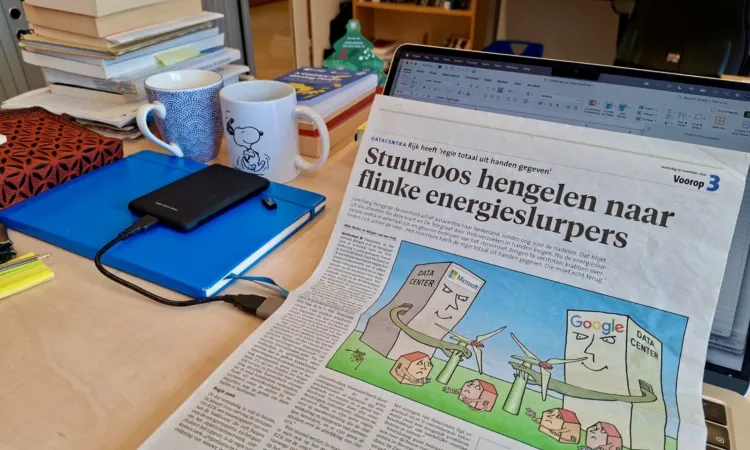Rethinking research output: How sustainable is our work?
Academic output is typically considered written work. At Living on the Other Side, we are proud to also produce audio-visual material—this website is one example. But only later did I start to wonder: audio-visual output takes up a lot of server space, so how sustainable is our research?
Satisfaction and unease
I’ve always been a huge fan of using photos and videos to communicate a message. There is truth to the old saying “a picture is worth a thousand words.”
But this project was different, as it was the first time I used audio-visual media as a main research output. And while I was excited by the creative potential, I quickly became aware of a much less glamorous side: the sheer volume of digital space these files consume.
When you’re working with high-resolution video and photo files, storage becomes a very real and very physical problem, not just on our laptops, but on servers too. As is standard practice, raw data is typically preserved in its entirety. In textual research, this means we delete the original after transcription and pseudonymisation or anonymisation (though true anonymisation is a challenge in itself—but that’s a topic for another day). With visual data, however, the raw files require much more storage capacity.
There’s no doubt that our data holds significant scholarly and societal value. But from a sustainability perspective, I’ve grown increasingly uneasy, especially after seeing this cartoon by Arend van Dam in Leids Dagblad, our local daily newspaper (10 November 2021).

Encroaching grey, receding green
The infrastructure needed to store all of our data—massive servers that take up physical space and require constant cooling—is far from environmentally neutral. I’ve long been critical of our culture of documenting everything—from daily meals and endless selfies to countless mundane moments. This constant data generation is feeding a world where we build more data centers than green spaces, and draw more water to cool servers than to sustain livelihoods and communities.
And now, I find myself part of that very system.
So while I still believe in the power of visuals to tell stories and enhance impact, I’m left asking: how do we balance the value of audio-visual research with the urgent need for sustainable digital practices?


